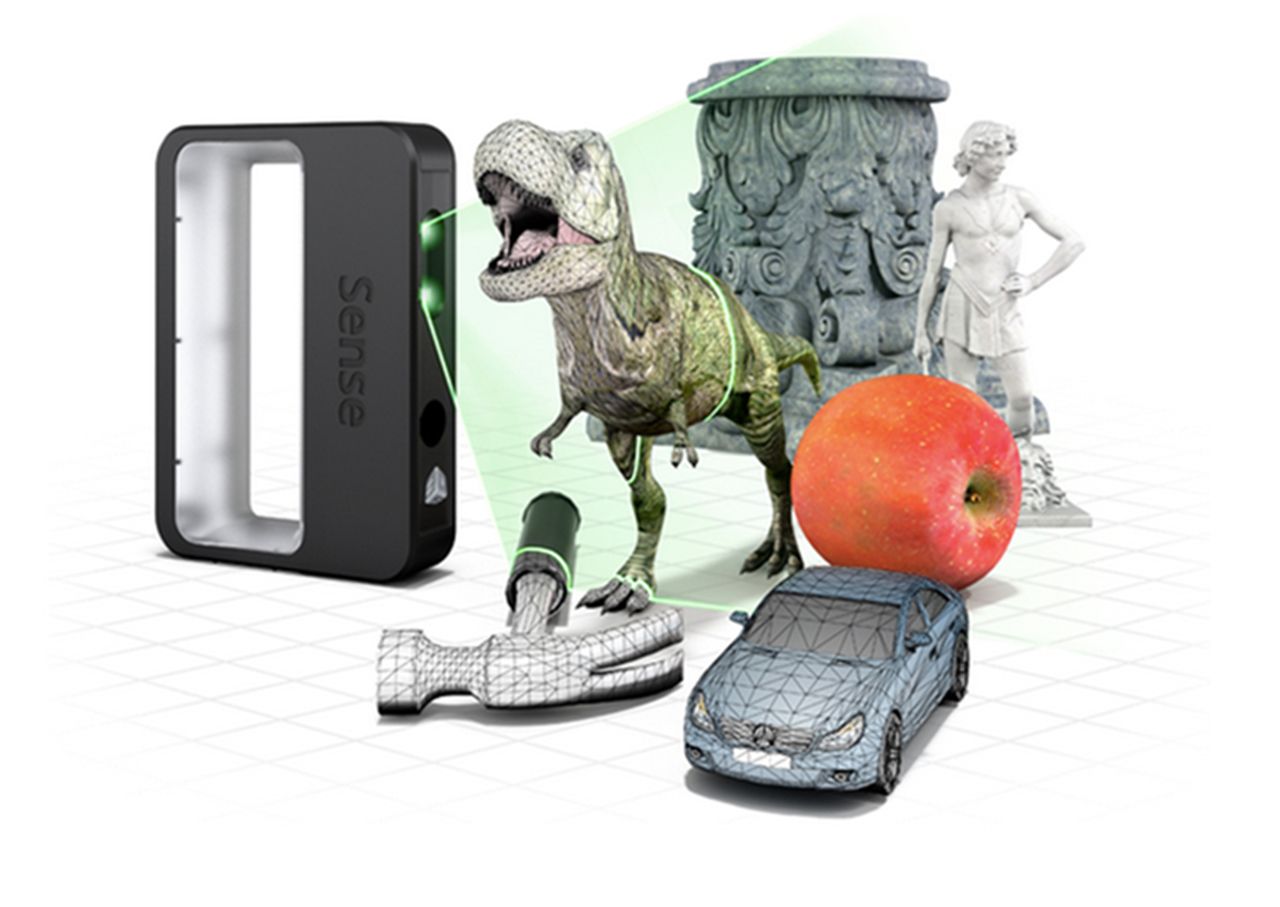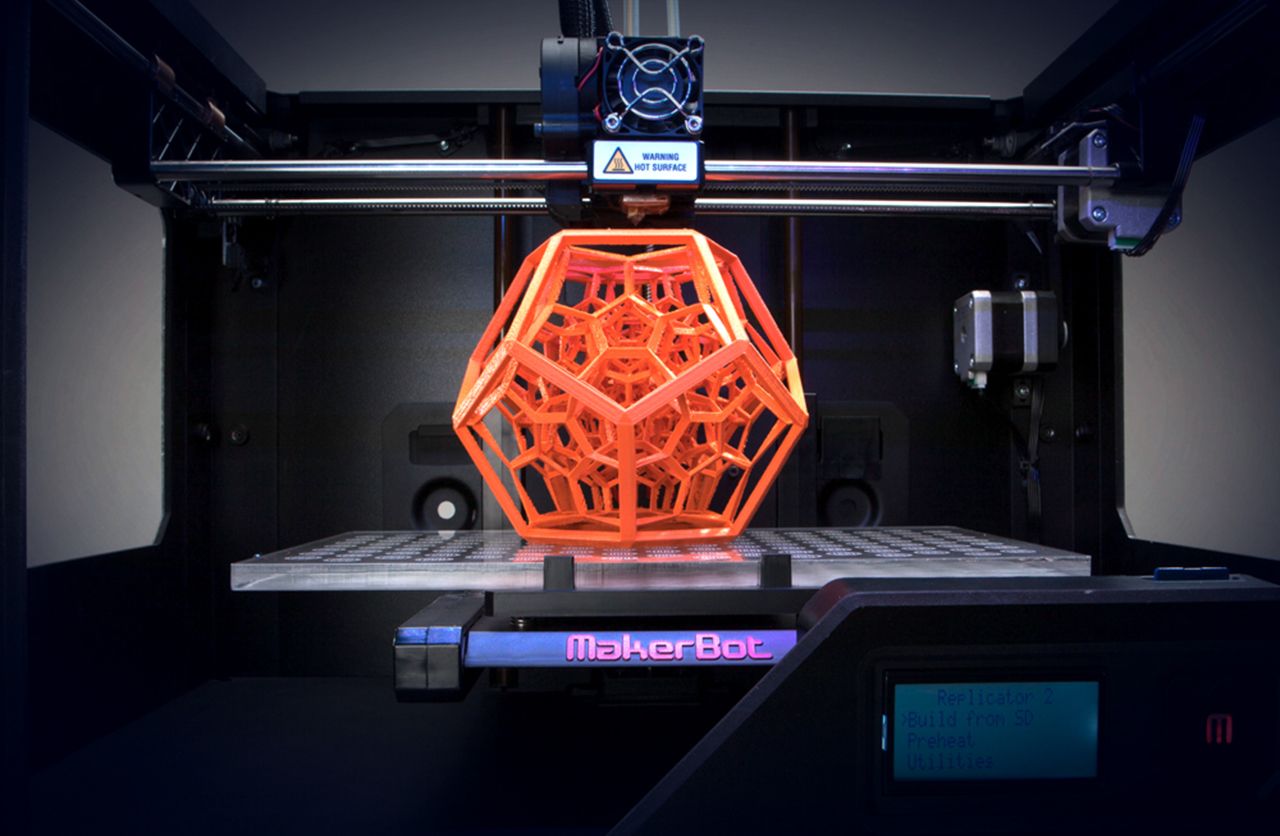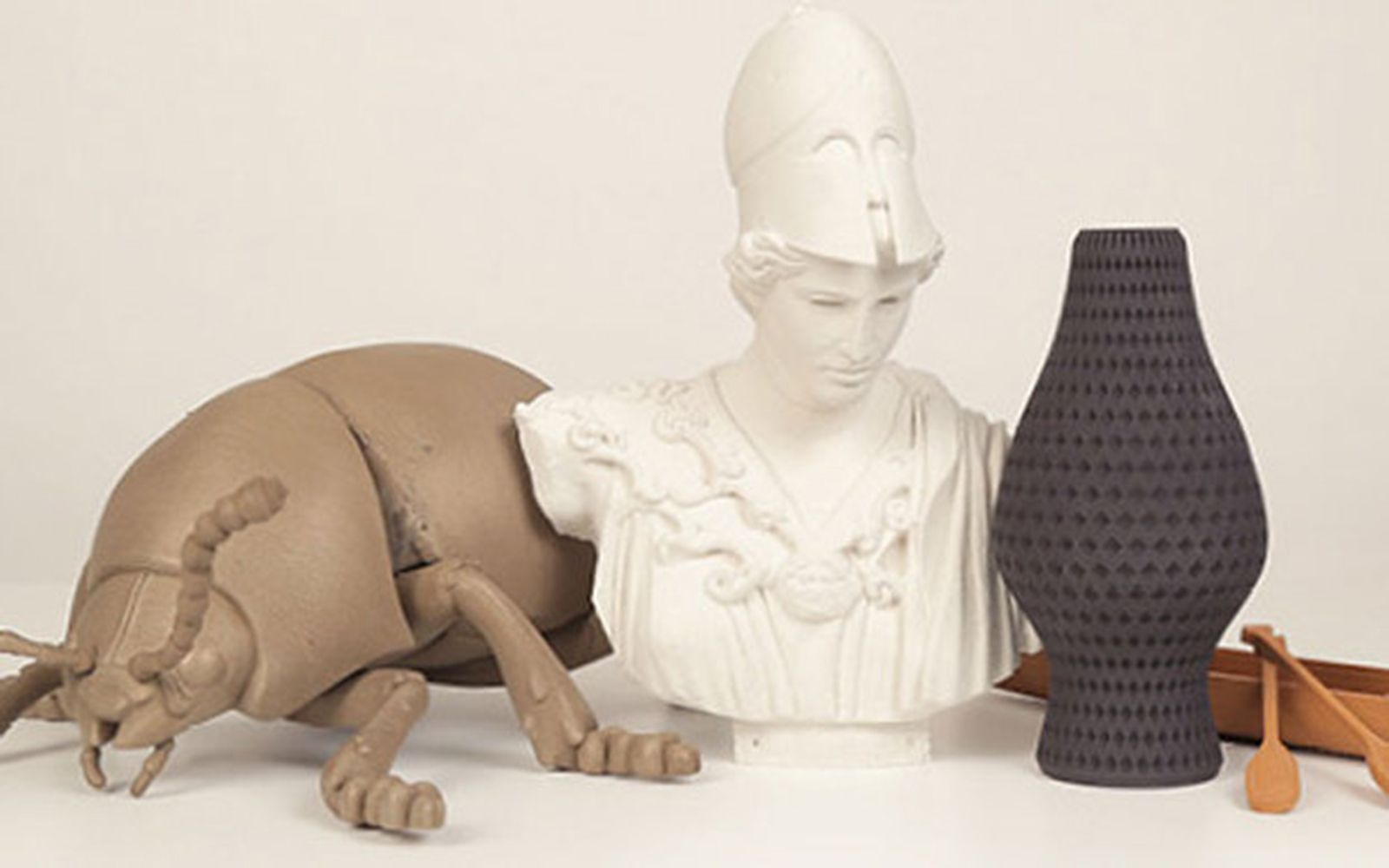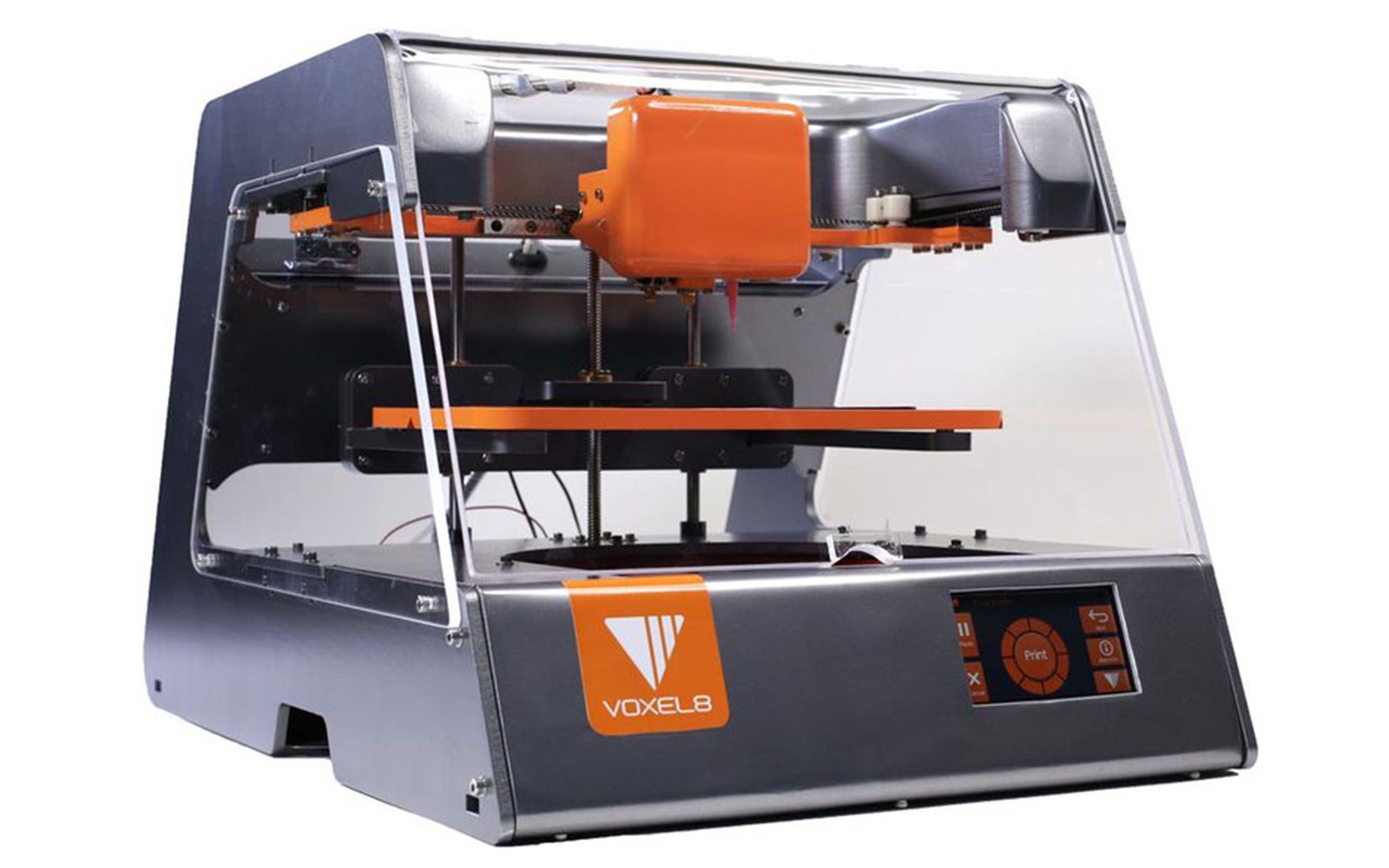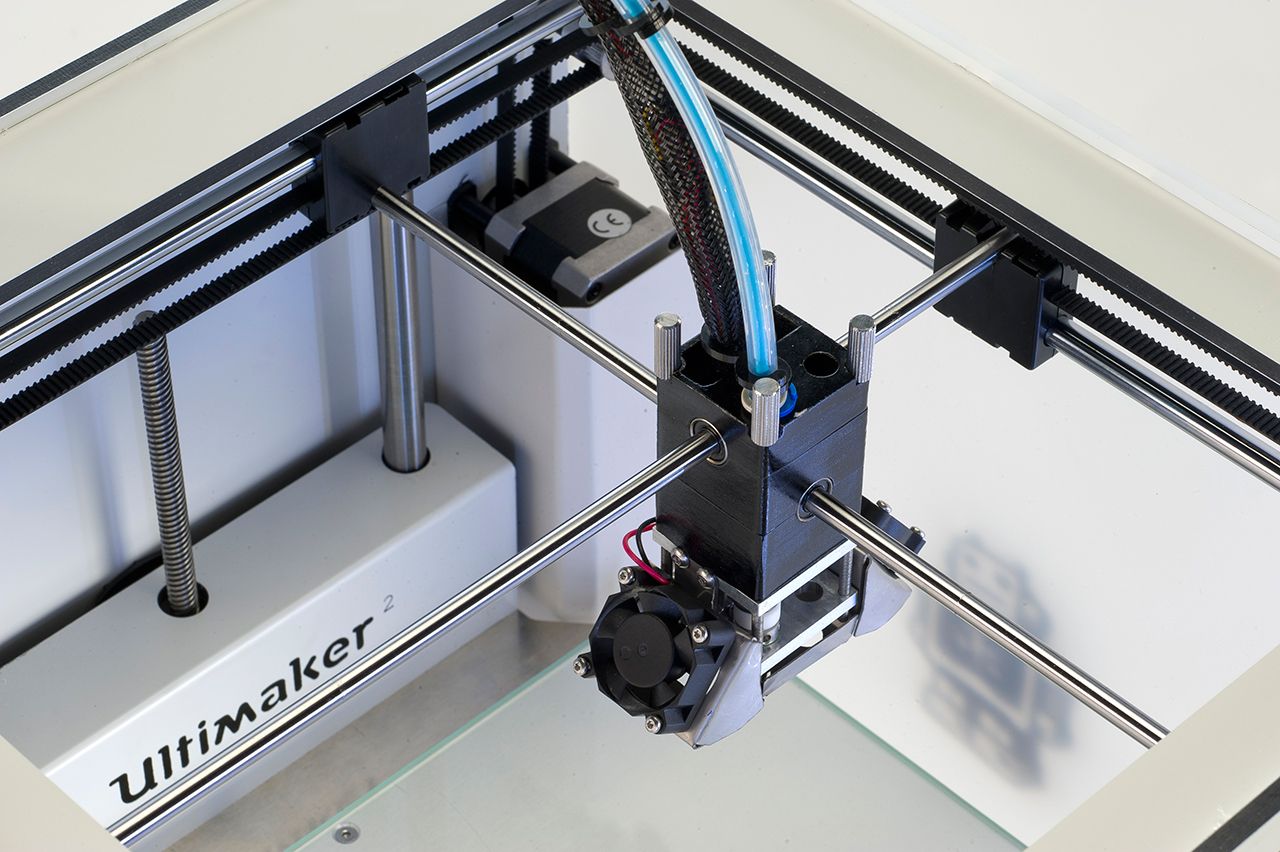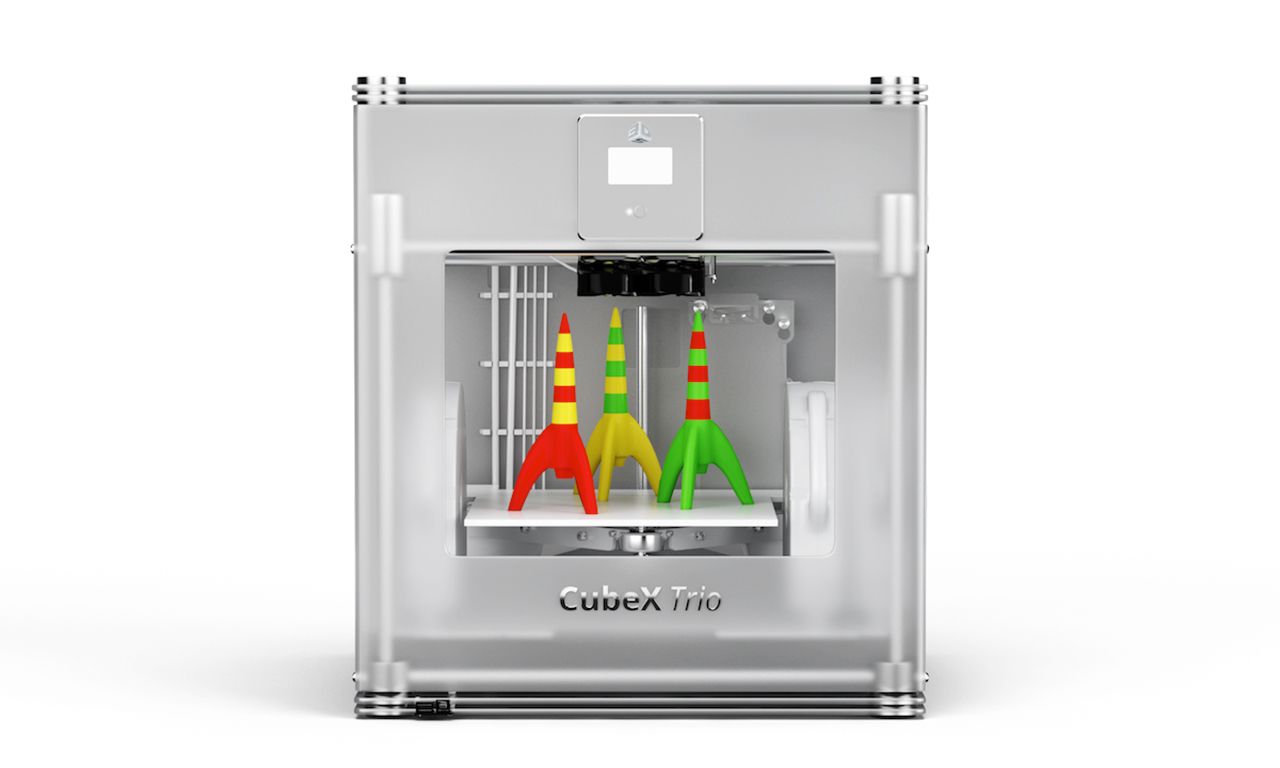The hyperbole around 3D printing, with talk of revolution and a new age, is getting ridiculous. Will 3D printing really impact our world more than the internet? If so, when will we be able to afford it? And more importantly how will 3D printing make such huge changes?
The answer is that this is the start of a new industrial revolution. Or more aptly, the death of the last one. Once they are able to print multiple materials in detail, 3D printers will become the equivalent of Star Trek’s replicators, letting you create virtually anything at home. This is a big deal.
The industrial revolution, in a nutshell, came from steam and electric power improving transport and manufacturing. Suddenly materials, say from a forest, could be transported to factories where items were made en masse thanks to machines. This meant people flocked to those factories for work making cities explode in size. Shops then located near these factories, attracting more people and growing the city further.
Now 3D printing, combined with the internet, could rewrite that history. They could, and probably might, end cities, with people moving back to more natural village-like settlements. We'll no longer need to shop in a certain area, build items in factories or deliver items anymore as everything we need is downloaded and printed at home. The only requisite will be printing materials, which could conceivably be pumped into your home printer like water to a tap.
So that’s a look at the potential future, but what about now?
Right now the level of 3D printing is still very much in its infancy. Home 3D printers vary in price from £300 to £3,000 but usually print only two types of plastic: ABS and PLA. The process is a long one and often a tiny error can render the entire print useless. So right now it’s still hobbyists, designers and artists who lead the way with early adopting. But that’s about to change thanks to 3D scanning.
READ: $100 3D printer made from e-waste by African inventor
While 3D printing gets faster, more accurate and easier to use with each update 3D scanning is also making leaps. This is important as it will mean websites like Thingiverse, which lets users upload 3D files for printing, can grow. People no longer need to be able to design objects using CAD, which takes training and skill. Anybody can scan an object (say, a spare back cover for a certain model of TV remote) then upload for others to download and print. It’s a bit like being able to rip CDs easily and share music online. Which brings us to the next speed bump - rights.
READ: 3D printing to be made easy with Windows 8.1
How anything can be kept by designers is going to be tough. In the same way that a film can physically be bought then shared all over torrent websites, most objects (without complex innards, for now) can be bought, scanned and uploaded to Thingiverse to share. While this isn’t a major issue now, once 3D printing becomes more complex and able to print complete builds, like a smartphone, this will be a hot issue.
Already printers are able to create circuitry, and phones like the LG G Flex are being made with plastic-based components. It’s only a matter of time before 3D printing a smartphone is as common as streaming a song on Spotify.
A recent creation of a metal at-home 3D printer, the 3D Welder is exciting for future developments. This is the first time affordable, safe metal 3D printing at home has been made possible - all thanks to a MIG welder attached to a 3D printer by students at the Delft University of Technology.
READ: Metal 3D printing at home is here at last thanks to the 3D Welder
Print circuits, fake wood, metal and stone materials
MakerBot was first to announce new materials for home 3D printers with imitation wood, metal and stone.
MakerBot says that the wood effect material is so effective that it can even be sanded and stained just like real wood. The metals can be made to have magnetic properties akin to real metals.
While the material is still a PLA plastic it has the look and finish of materials including wood, stone and metal. Even the weight is similar to the materials, varying to give the best possible final effect.
The new materials require a different extruder, which MakerBot says takes just minutes to swap out. Presumably if you have a dual extruder printer you'll be able to mix material effects. Expect these to be available later in 2015.
Voxel8 announced its printer capable of not only printing plastics but conductive materials too. This means makers can prototype anything from scratch to finished stopping along the way to drop in any chips they might need.
READ: Voxel8 will print an entire drone, or anything with electronics, from scratch
Should I buy a 3D printer to become an early adopter?
Right now all you have, as an at-home option, is extrusion printing that uses plastic. Even at the top end you’ll get only two or three nozzles, for a few plastic types or colours. That means you can print at different flexibilities but isn’t exactly complex. While HP plans to launch in the 3D printer market in 2014 with a plan to bring the price down, a few good options available here and now are listed later in this article.
READ: HP to bring 3D printer prices down in 2014
One of the big things you’ll miss by adopting early is the ability to print metals. This is only just getting used in manufacturing now as Roll-Royce is beginning to test printing 3D parts for its jet engines. But it works. Just recently the world’s first 3D printed gun was made entirely of metal using 3D printing. This process is called Direct Metal Laser Sintering (DMLS) which effectively heats metal dust into shapes using a laser.
READ: Rolls-Royce to 3D print aircraft engine parts
3D printers
- Cubify CubeX - £1,650
- MakerBot Replicator 2 - £1,500 (ex VAT)
- Ultimaker 2 - £1,600
- Peachy Printer - $100 (£62)
- SwissPen - £66
- 3Doodler pen - $99
- The Buccaneer - Starts at $399
- Afinia - $1,299
- Mbot - Starts at $555
- Printrbot - Starts at $259
- Phoenix 3D Printer - Starts at $375
- Deezmaker Bukito Mini - $699
- RoBo - Starts at $599
- Solidoodle - Starts at $499
- Lulzbot Mini - Starts at $1,350
- HP Multi Jet Fusion
- Formlabs Form 1+ - Starts at $3,290
- Mink
- Overlord - Starts at £99
- Candy
- The Da Vinci Junior - Starts at £299
- Stratasys Mojo - Starts at $5,999
- Autodesk
3D scanner options
- 3D Systems Sense - £400
- MakerBot Digitizer 3D - £900
- ASDA in store scan and print - £40
Is there anything I can buy to upgrade my existing printer?
Canada-based Mosaic Manufacturing has developed The Palette with the idea of turning any 3D printer into a multi-colour printer. It can even turn a 3D printer into a multi-material printer. The Palette can handle up to four separate filament strands at once, with varying colours and properties, providing new capabilities to people who already own 3D printers.
The Palette acts like a intermediary device between your computer and printer, grabbing a filament, then cutting it, and fusing it with a new one, all with the purpose of letting your printer move beyond creating single-colour plastic objects. Mosaic Manufacturing launched a Kickstarter campaign for The Palette in April 2015 and is ready to begin taking pre-orders.
The campaign quickly passed its goal of $61,414, with a month remaining. The first 20 backers pre-ordered for just $599. The first units should start shipping to Early Bird backers in December, with production kicking off a month later.
So, what now?
Right now investing money in a 3D scanner and 3D printer won’t give you any return on your buck, unless your work can be helped by it. So if the area excites you and you fancy getting involved now is a fun time to try, if you have the spare cash. But don't fret if it all sounds a bit steep, because prices should start dropping fast, with more kit becoming available to print, and 3D scanning is going to improve.
So if you were one of those people on Freeserve with dial-up internet in the late Nineties and look back fondly on your early adoption, maybe you should do it again now. Because ten years from now everyone will be doing it.
Buying isn't the only option though as many courier firms now offer 3D printing services. Even Royal Mail has jumped on that particular bandwagon. Royal Mail, on New Cavendish Street in London, has iMakr printers which will churn out anything a customer brings along on file. Also on offer are pre-designed items like a postage stamp magnet for £5 or a wine cooler for £45.

